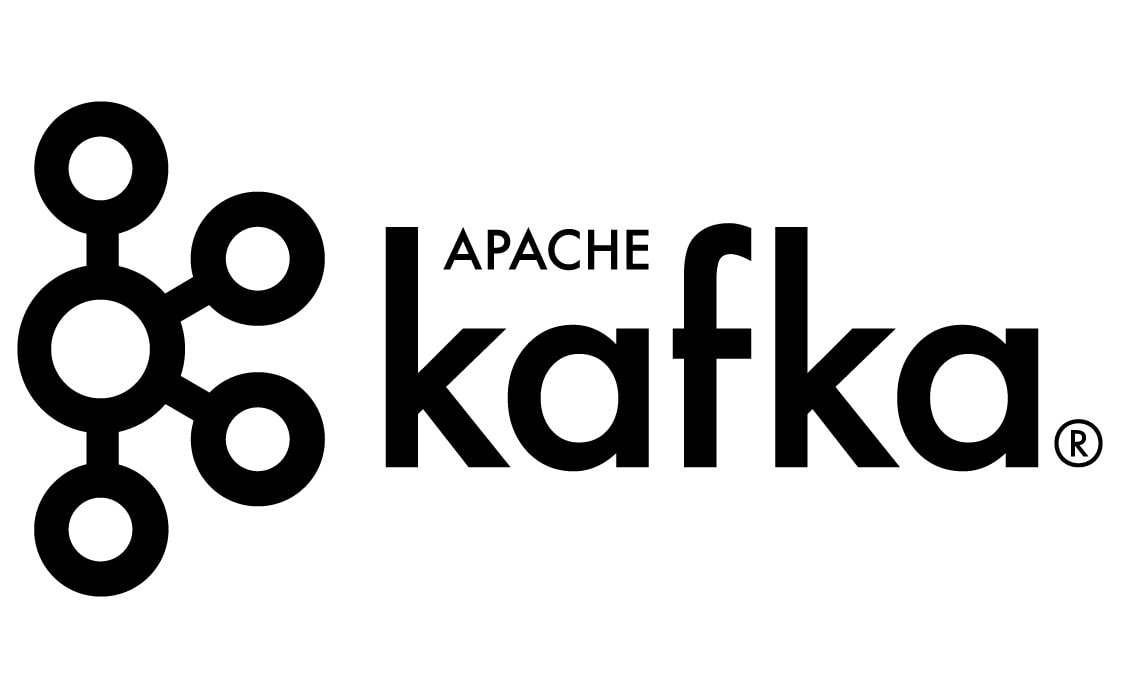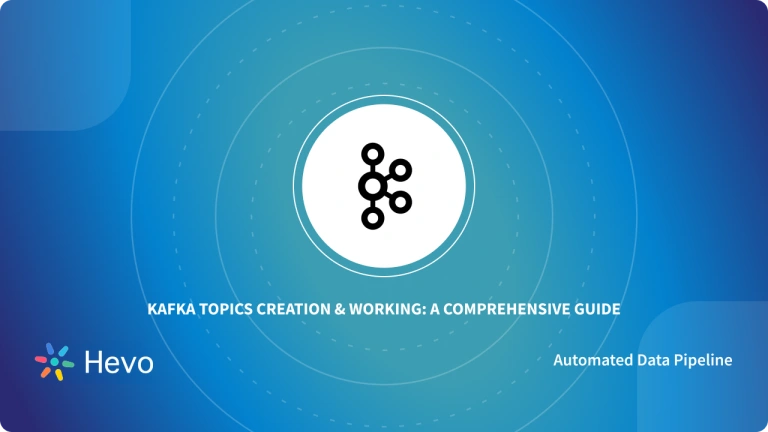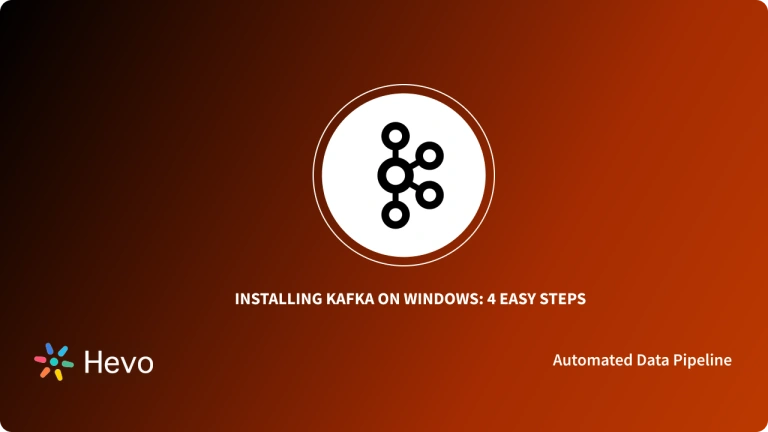The continuous flow of data from diverse sources that may be stored, processed, and evaluated in real-time is known as Streaming Data or Stream Processing. Networking devices, applications, server log files, financial transactions, website activity, and other sources provide Data Streams that are aggregated to provide Real-time Insights and Analytics. Streaming Data solutions allow businesses to consume and analyze data in real-time, unlike Traditional Solutions that require data to be ingested and processed before being used.
In this article, you will be introduced to the comparative study of Pulsar vs Kafka. Moreover, you will also be introduced to Apache Pulsar, Apache Kafka, and their key features. Read along to learn more about the comparative study of Pulsar vs Kafka!
Table of Contents
What is Apache Pulsar?

Pulsar is a Multi-tenant, Cloud-native, and Open-source Server-to-Server Messaging System developed by Yahoo in 2013. Since its contribution to Apache Software Foundation (ASF) in 2016, Pulsar has grown in popularity. The Apache Pulsar Messaging System was designed to fill in the gaps of existing Open-source Messaging solutions like Multi-tenancy, Geo-Replication, and Durability.
Apache Pulsar is a Distributed Pub-sub Messaging system. The Publishers or Senders don’t send messages (or events) to specific publishers or receivers. Instead, the consumers subscribe to the topics they’re interested in and receive messages every time an event associated with that topic is published. The Pub-Sub method doesn’t require extensive Queueing or Batching. It also offers low Publish and End-to-end Latency, guaranteed Message Delivery, and Zero Data Loss.
5 Key Features of Apache Pulsar
Following are some important features to keep a note of:
1) Schema Registry
- In any messaging system, Producers and Consumers must use the same language. The Pulsar software comes with a preinstalled schema registry. All you need to do is register the schema with a Pulsar Topic, and it will enforce the rules according to the schema.
- Pulsar adopted two basic approaches for safety in Messaging: the Client-side Approach and the Server-side Approach. In the first approach, both Producers and Consumers are responsible for serializing and deserializing messages.
- In contrast, Producers and Consumers inform the system about data types transmitted via the topic in the second approach, ensuring type safety and synchronization.
2) Geo-Replication
- Replicating messages to remote locations is crucial to Disaster Recovery and enabling applications to operate globally.
- By using Geo-replication, applications can connect to the local cluster while sending and receiving data to the rest of the world.
- Pulsar supports Geo-replication, allowing messages published to a Topic to be automatically replicated to the configured remote Geo-location without complicated setups or add-ons.
3) IO Connector
- The primary purpose of a messaging system is to bind together Data-intensive Systems like databases and stream processors.
- Apache Pulsar comes with a wide range of ready-made connectors, including MySQL, MongoDB, Cassandra, RabbitMQ, Kafka, Flume, Redis, and many others. These I/O connectors make it easy to bind various systems together.
4) Real-Time Compute
- Pulsar can perform user-defined computations on the messages, eliminating the need to use an external computational system to perform fundamental transformations, such as data enrichment, filtering, and aggregation.
5) Scalable Storage
- Pulsar’s independent storage layer, coupled with support for tiered storage, allows you to keep messaging data indefinitely.
- Apache Pulsar does not have a physical limit on how much data it can retain and ingest.
What is Apache Kafka?

Apache Kafka is an Open-source, Distributed, Partitioned, & Replicated Commit-log-based Publish-Subscribe Messaging System. By offering a real-time Publish-Subscribe solution, Apache Kafka can use data volumes that grow in the order of magnitude larger than the actual data to overcome the challenges of consuming them. Apache Kafka supports parallel data loading in Hadoop Systems as well.
Apache Kafka combines Queuing and Publish-subscribe Messaging models that allow for data to be distributed across many consumers. It also uses a partitioned log model to stitch the two messaging solutions so there can be multiple subscribers for the same topic, and they are assigned a partition for better Scalability. Read about Kafka partition and creating topics for better data distribution and reliability.
With Hevo, you can effortlessly export your Kafka data to any destination, such as BigQuery, Redshift, Snowflake, and many more. Hevo’s no-code platform ensures smooth and efficient data integration and transformation.
- Seamless Export: Transfer Kafka data to your target destination in 2 Steps.
- Flexible Transformations: Use drag-and-drop tools or custom Python scripts for data preparation.
- Real-Time Data Ingestion: Keep your data current with real-time synchronization.
Join over 2000 satisfied customers, including companies like Cure.Fit and Pelago, who trust Hevo for their data management needs.
Try Hevo for Free5 Key Features of Apache Kafka
Below are some important notable features of Kafka:
1) Real-Time
- Event-based systems, such as Complex Event Processing (CEP) systems, require that messages produced by producer threads be visible immediately to consumer threads. Read about real-time reporting with Kafka analytics to organize your data sources.
2) Multiple Client Support
- It is easy to integrate clients from different platforms such as Java, .NET, PHP, Ruby, and Python with Apache Kafka.
3) Persistent Messaging
- Despite vast volumes of stored messages, Apache Kafka provides Constant-time Performance even with large batches of data in the TB range.
- Apache Kafka persists messages on disk and replicates them within the Cluster to prevent data loss.
4) High Throughput
- Kafka is designed with Big Data in mind and can handle hundreds of megabytes of R/W Commands/second from many clients on commodity hardware.
5) Distributed
- Apache Kafka’s cluster-centric design explicitly distributes messages across Kafka servers and maintains per-partition ordering semantics across consumer machines.
- The Kafka cluster can grow transparently and elastically without any downtime.
Apache Pulsar vs Kafka: What are the 5 Key Differences?
| Aspect | Apache Pulsar | Apache Kafka |
| Architecture | Multi-layer, separates compute and storage. | Single-layer, tightly coupled compute and storage. |
| Message Consumption | Multiple modes (exclusive, shared, failover). | Consumer group model, limited flexibility. |
| Retention | Topic-level, supports long-term offloading. | Partition-level, limited to time/size limits. |
| Acknowledgement | Per-message acknowledgment. | Offset-based, sequential acknowledgment. |
| Community Support | Growing support, newer ecosystem. | Mature ecosystem, large active community. |
Here are some major key differences between Kafka vs pulsar to be noticed
1) Architecture
Apache Kafka
- Both Apache Kafka and Pulsar interact through topics that are split up into partitions. Further, these partitions distribute data across nodes to be consumed by multiple consumers. The rudimentary difference is the architectural approach, where Kafka follows a Partition-centred Design, whereas Pulsar follows a Multi-layered Architecture Design.
- Apache Kafka follows a Monolithic Architecture where partitions are directly stored to the Leader Node, and data is replicated to the Replica Node for fault tolerance. The biggest drawback of Kafka is that the partition is stored on a local disk that has limited space.
- Another disadvantage of Kafka is that once the Replica Node size is filled, incoming messages will halt, leading to data loss. In Kafka, Brokers aren’t stateless, which means another Broker must synchronize state from the current broker if it fails.
Apache Pulsar
- Apache Pulsar follows a Segment-centric Approach where Partitions are subdivided into segments evenly distributed across Bookies. This approach helps Redundancy and Scaling, removing the need to replicate content when the memory is maxed out.
- Further, Brokers are stateless in Apache Pulsar Architecture. Apache Pulsar maintains state, but the data is stored in Apache Bookkeeper rather than Brokers.
2) Message Consumption
Apache Kafka
- Consumers pull messages from the Server when using Apache Kafka. The Long-polling method ensures that new messages are consumed almost immediately.
Apache Pulsar
- Apache Pulsar uses a Publish-Subscribe (Pub-Sub) model. Producers publish messages, and consumers subscribe to receive them.
3) Retention
Apache Kafka
- Apache Kafka and Pulsar both support long-term storage, but Kafka allows a smart compaction strategy instead of creating snapshots and leaving the Topic as is.
Apache Pulsar
- Apache Pulsar provides for the deletion of messages based on consumption. Both systems will likely do the job, but users must consider storage capabilities before selecting a platform.
4) Message Acknowledgement
Apache Kafka
- Apache Kafka acknowledges messages at the Consumer Group Level for each partition separately. It is not possible for two Consumers of the same Consumer Group to process two messages from the same partition simultaneously. Partitioning ensures that messages arrive in order.
Apache Pulsar
- Whereas Apache Pulsar allows users to add multiple consumers to one topic and retrieve messages simultaneously, each of which can be acknowledged individually. The purpose of Pulsar is to manage issues as Task Queues, also known as Scheduling.
5) Documentation & Community Support
Apache Kafka
- Compared to Pulsar, Apache Kafka has a much larger and more active community because it is more popular and established.
Apache Pulsar
- Despite the smaller size of the community, Apache Pulsar provides extensive documentation to support developers.
You can also read more about:
Conclusion
In this article, you have learned about the comparative understanding of Apache Pulsar vs Kafka. This article also provided information on Apache Pulsar, Kafka and their key features. Apache Pulsar has a clear advantage over Kafka in Separating Tenants, Storing Older Data on Cheaper Storage, efficiently Replicating Clusters across geographic boundaries, consolidating Queueing and Streaming capabilities into one system.
Read about other Kafka alternatives and see which suits your use case. If you want to combine data from multiple sources for analysis without having to write complicated code, you can try out Hevo Data.
Sign Up for a 14-day free trial and experience the feature-rich Hevo suite firsthand.
FAQs
1. Why is Pulsar better than Kafka?
Pulsar offers better scalability with its separation of compute and storage, supports multi-tenancy, provides flexible message consumption modes, and allows long-term storage with tiered storage options. These features make Pulsar more versatile for modern cloud-based and distributed workloads.
2. What is the difference between Kafka stream and Pulsar?
Kafka Streams is a stream-processing library for building real-time applications. Pulsar includes Pulsar Functions for lightweight stream processing but focuses on unified messaging and streaming. Pulsar natively handles events, queues, and pub-sub, while Kafka Streams emphasizes data processing pipelines.
3. Is Pulsar compatible with Kafka?
Yes, Pulsar is compatible with Kafka through its Kafka-on-Pulsar (KoP) protocol handler. This allows Pulsar to support Kafka clients and enables seamless migration or integration without changing existing Kafka applications.




